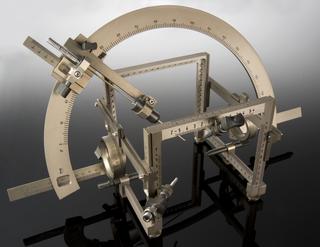

Chain saw, cased, c. 1894-1945, from Harley collection, invented by Leonardt Gigli 1897
Leonardo Gigli (1863-1908) was an Italian surgeon who developed this surgical saw between 1894 and 1897. When in use, two holes were made in the area to be cut, for instance the skull. The metal saw was passed through and the handles attached. The saw cut though the bone without damaging the surrounding area. Although the chain was liable to twist and break it was cheap and easy to replace and store. Removing portions of the skull is known as craniotomy, an operation still carried out today.
This object comes from the Harley collection.
Details
- Category:
- Surgery
- Collection:
- Sir Henry Wellcome's Museum Collection
- Object Number:
- A600852
- Materials:
- ebony, steel (metal), wood (unidentified), brass (copper, zinc alloy), silk velvet, metal (unknown) and paper (fibre product)
- Measurements:
-
overall: 21 mm x 101 mm x 91 mm, .08kg
overall (box closed): 20 mm x 101 mm x 92 mm, 0.1 kg
handles: 12 mm x 80 mm
saw: 475 mm .03kg
- type:
- surgical saw




